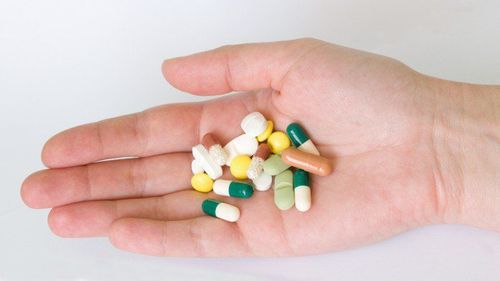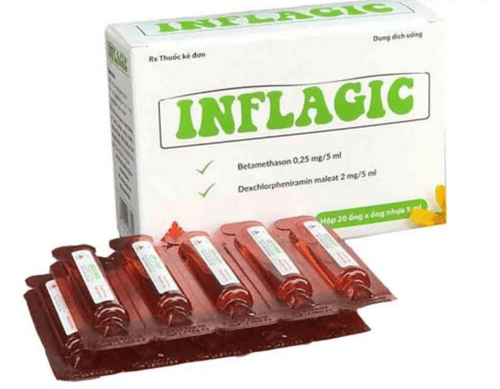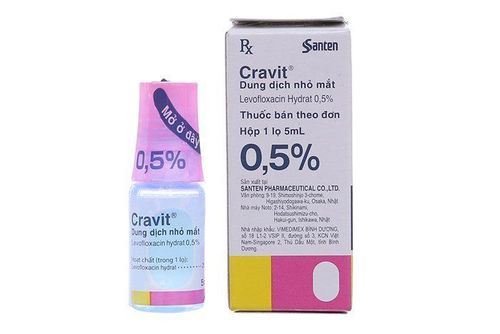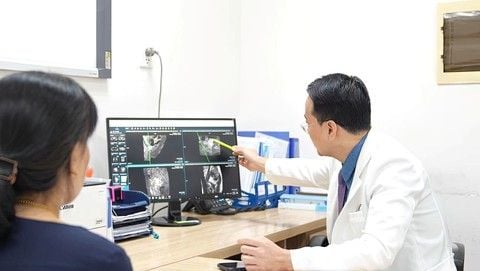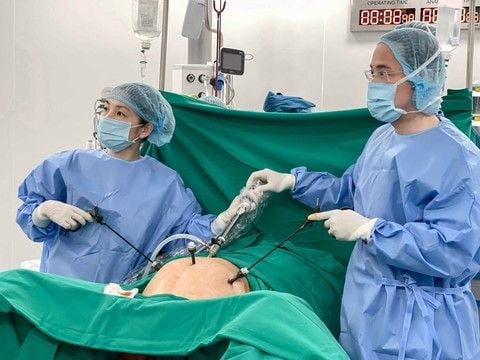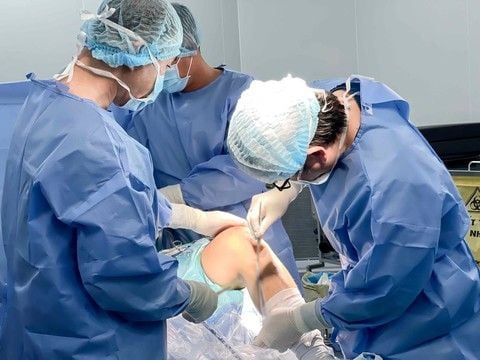Neonatal conjunctivitis is a condition in which the eyes become red due to infection, irritation, or blockage of the tear ducts. If antibiotic eye drops are not used for children with conjunctivitis and the infection is allowed to develop, it can be very dangerous.
1. What are the symptoms and causes of conjunctivitis in neonates?
General symptoms of conjunctivitis in neonates usually include red eyes and swollen, red, and tender eyelids, with some pus.
The cause of conjunctivitis in neonates is often difficult to determine and may be due to a blocked tear duct, irritation, or a viral or bacterial infection that the mother passes to her baby during birth. For example, the herpes virus that causes genital and oral herpes in the mother's vagina can cause conjunctivitis in neonates and serious eye damage.
The most common bacteria that cause conjunctivitis in neonates are Chlamydia, gonorrhea, and Neisseria, other viruses and bacteria can also cause conjunctivitis in neonates but less commonly.
1.1 Conjunctivitis in neonates caused by Chlamydia trachomatis
About half of all cases of conjunctivitis in neonates are caused by Chlamydia. Women with untreated Chlamydia trachomatis can pass the bacteria to their babies during birth and cause conjunctivitis in neonates. Symptoms include red eyes, swollen eyelids, and discharge that usually appear 5 to 12 days after birth. Chlamydia trachomatis bacteria can infect the lungs and nasopharynx (where the back of the nose connects to the mouth) and lead to pneumonia.
SEE MORE: Risk of conjunctivitis in neonates whose mothers have gonorrhea
1.2 Conjunctivitis in neonates caused by gonococcus
Neisseria gonorrhoeae causes gonococcal conjunctivitis in neonates. Women with untreated gonorrhea can pass the bacteria to their babies during childbirth. Symptoms of gonococcal conjunctivitis in neonates usually include red eyes, thick pus in the eyes, and swollen eyelids, and the illness begins about 2 to 4 days after birth. There is an association between gonococcal conjunctivitis in neonates and the risk of bacteremia (a serious blood infection) and meningitis and spinal cord infection in these babies.
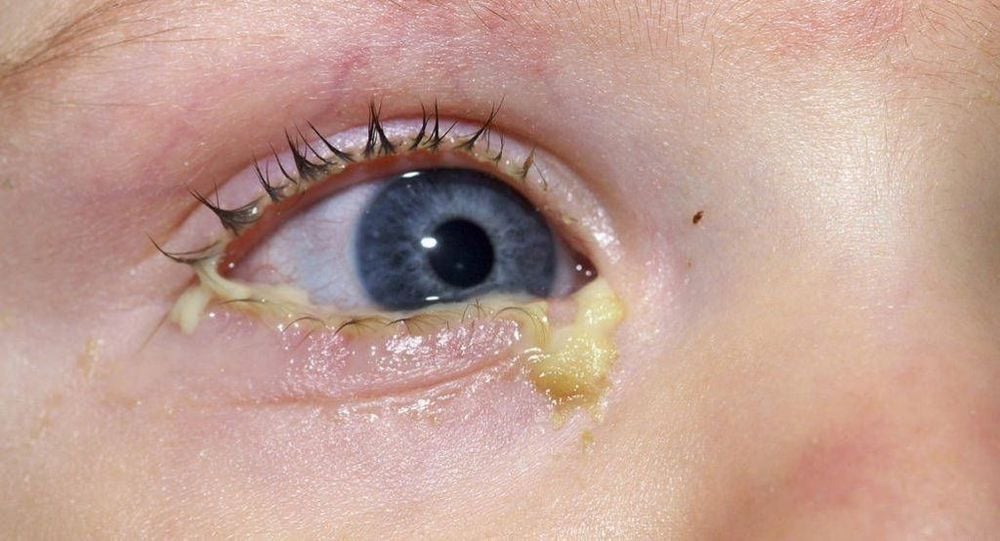
1.3 Chemical conjunctivitis in neonates
To help prevent bacterial infections, antibiotic eye drops for neonates are often used. However, the baby's eyes may become irritated and this may be diagnosed as chemical conjunctivitis. Symptoms of chemical conjunctivitis in neonates usually include mild red eye(s) and swollen eyelids and rarely discharge. Symptoms may last only 24 to 36 hours after birth.
2. How is conjunctivitis in neonates treated?
Antibiotic eye drops for children are commonly used to treat bacterial conjunctivitis in neonates. Depending on the severity and bacteria causing conjunctivitis in neonates, the doctor will choose the appropriate antibiotic in the form of eye drops or eye ointments, oralointments oral or intravenous medications or a combination.
For conjunctivitis in neonates caused by Chlamydia, the baby will be given antibiotics that can kill Chlamydia. If gonococcus is the cause of the conjunctivitis in the neonates, antibiotics will be given to the baby through an intravenous injection. Chemical conjunctivitis usually does not require treatment and the neonate will usually get better within 24 to 36 hours.
For conjunctivitis caused by bacteria and viruses other than Chlamydia trachomatis and Neisseria gonorrhoeae, neonetal topical antibiotic eye drops are preferred. Doctors often prescribe antibiotic drops or ointments to treat conjunctivitis caused by other bacteria.
In addition to treating the cause, improving the symptoms will help the baby feel more comfortable. Parents can wash the infected eye of the neonate with a saline solution to remove any accumulated pus. If your baby has a blocked tear duct, you should gently massage and warm the eye and nose area with a warm compress to reduce swelling. If your baby’s tear duct remains blocked until after the age of 1, surgery to clear the duct may be considered. Make sure you wash your hands before and after touching your baby’s infected eye.
SEE ALSO: Diagnosis and treatment of blocked tear duct conjunctivitis in neonates
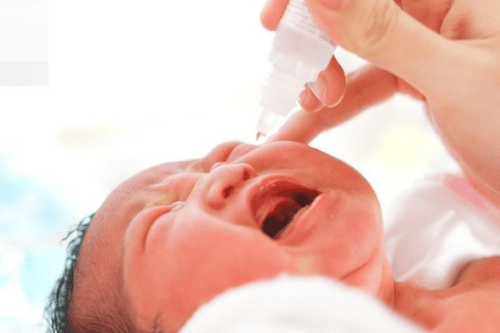
3. Can conjunctivitis in neonates be prevented?
If not treated promptly, neonates can develop corneal ulcers and lead to blindness. Therefore, antibiotic eye drops for neonates are recommended to prevent conjunctivitis in neonates.
During pregnancy and before giving birth, women with genital herpes should consult their doctors about ways to minimize the possibility of spreading to the baby to avoid serious risks due to conjunctivitis in neonates caused by herpes.
To prevent unwanted complications, especially to limit the risk of leading to extremely dangerous antibiotic resistance, parents should take their children to medical centers for examination and be prescribed the appropriate antibiotic to treat conjunctivitis in children.
References: ncbi.nlm.nih.gov, cdc.govPlease dial HOTLINE for more information or register for an appointment HERE. Download MyVinmec app to make appointments faster and to manage your bookings easily.
To arrange an appointment, please call HOTLINE or make your reservation directly HERE. You may also download the MyVinmec app to schedule appointments faster and manage your reservations more conveniently.
